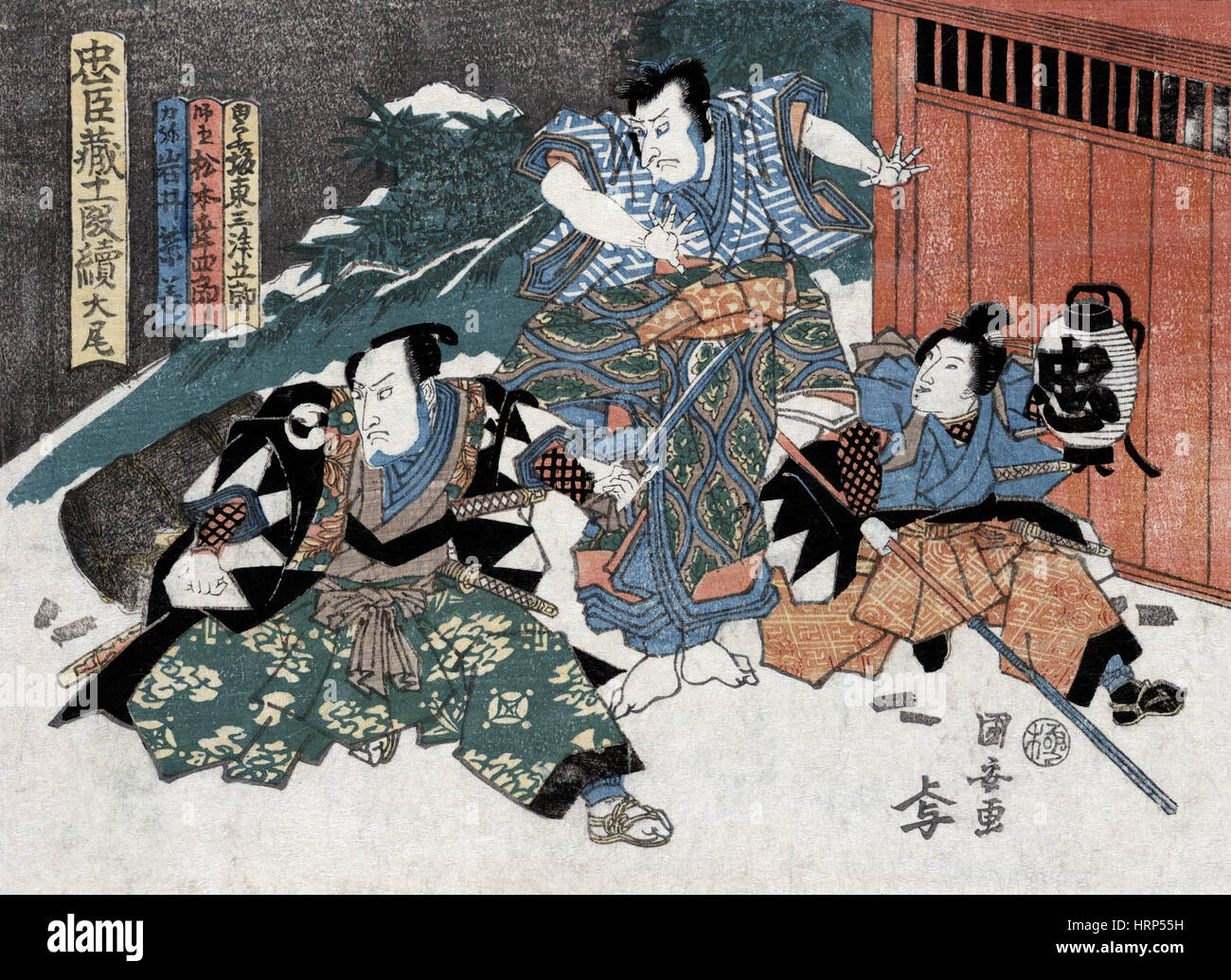Chushingura, Revenge of the 47 Ronin, 18th Century

Image details
Contributor:
Science History Images / Alamy Stock PhotoImage ID:
HRP55HFile size:
39.4 MB (3.3 MB Compressed download)Releases:
Model - no | Property - noDo I need a release?Dimensions:
4350 x 3163 px | 36.8 x 26.8 cm | 14.5 x 10.5 inches | 300dpiPhotographer:
Photo ResearchersMore information:
This image could have imperfections as it’s either historical or reportage.
Entitled: "Taibi". Epilogue of the Chushingura. Print showing three men outside a shed, one is carrying a large knife, another is carrying a lance and a lantern, and the third man appears unarmed. Chushingura is the title given to fictionalized accounts in Japanese literature, theater, and film that relate the historical incident involving the Forty-seven Ronin. The story tells of a group of samurai who were left leaderless (becoming ronin) after their daimyo (feudal lord) Asano Naganori was compelled to commit seppuku (ritual suicide) for assaulting a court official named Kira Yoshinaka. The ronin avenged their master's honor by killing Kira, after waiting and planning for a year. In turn, the ronin were themselves obliged to commit seppuku for committing the crime of murder. This true story was popularized in Japanese culture as emblematic of the loyalty, sacrifice, persistence, and honor that people should preserve in their daily lives. The historical basis for the narrative began in 1701. Woodcut by Kuniyasu Utagawa, published circa 1815-18.